Want to know what to see in Naples? You've come to the right place. We at Visit Italy have selected for you 10 must-see attractions in 2024.
You are in a veritable open-air museum. The city unfolds in a network of cobbled streets and alleys, characterised by the presence of important old buildings and new constructions, many churches and bars where you can taste real Italian espresso. Located in southern Italy, the city of Naples lies on the flank of Vesuvius, in the heart of the gulf of the same name. The volcano is still active and is known to have destroyed the ancient Roman city of Pompeii. Naples boasts centuries of artistic and architectural history, witnessed by its Cathedral and the Duomo of San Gennaro, which are rich in frescoes. Monuments to visit in Naples also include historical highlights such as the luxurious Royal Palace and the Maschio Angioino, a 13th century building.
If you want to know the main things to see in Naples, from Baroque to contemporary masterpieces, through centuries of history. Follow our advice on the many itineraries for experiencing Naples, also on foot. Rimember also that with the Naples Pass you can have a lot of advantages, such as moving around by public transport and skip the lines to dozens of attractions to visit at a special price.
Follow our updated guide on what to see in Naples in 2024.
Find out more about Naples Pass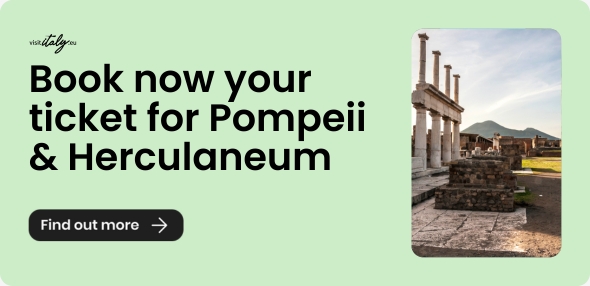
Here is what to see in Naples at least once in a lifetime
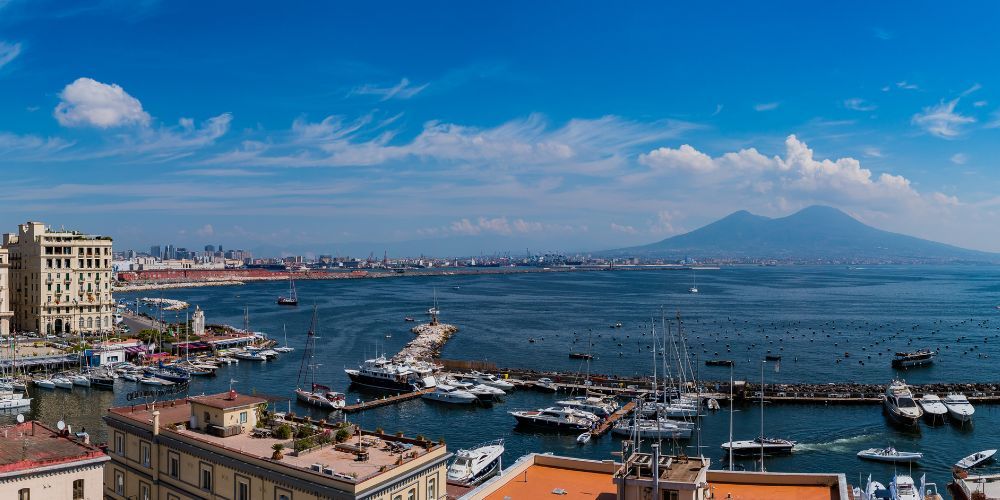
Fully visiting this wonderful city and discovering what to see in Naples means immersing yourself in its alleys and monuments, which are many, beautiful and full of history. Getting to know the culture, the people and eating their food is absolutely necessary and a must. More than a trip, it is a real experience that must be lived in the round.
If you still haven't chosen what to see in Naples, follow our guide. We will show you everything about the city of Vesuvius, the home of pizza. Its historic centre is so captivating and thriving with monuments that it has been declared a UNESCO World Heritage Site. The Sanità district is increasingly a popular destination for foreign tourists. Stroll through the maze of streets of the shopping districts of Spaccanapoli, the heart of the historic centre of Naples, the Quartieri Spagnoli, the Vomero and the residential hills of Posillipo and admire the beauty of the city as it opens onto the Mediterranean Sea with Vesuvius in the background. Don't miss the opportunity to take a Vespa tour of the city among its beautiful neighbourhoods and take a detour through the Chiaia district and visit Magnolia its heart, these are definitely places to visit in Naples. The protégé of San Gennaro is difficult to recount, one must live it, savour it. There are too many details, nuances and discordances to be taken into account.
Here is our selection of the most beautiful and inspiring attractions of what to see in Naples.
It only remains for us to wish you a lot of fun!
You cannot visit Naples without knowing its history
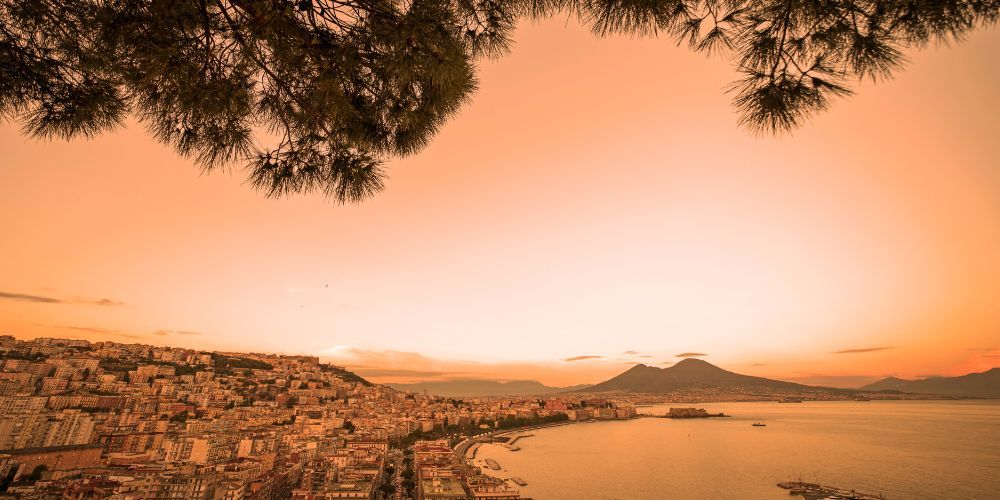
The history of Naples dates back some three millennia. Over time, the city expanded to become one of the most populous megalopolises in the world and has had a great influence on Europe since ancient times. Its narrative represents a microcosm of European history, made up of different civilisations, peoples and cultures, which have also left their mark in its artistic and monumental heritage of incomparable universal value. The capital of southern Italy suffered centuries of invasions, attacks and destruction. It has also had to face numerous natural disasters such as volcanic eruptions, earthquakes, tsunamis, lahars and plagues.
Naples had its heyday from the Restoration to the Unification of Italy, when King Ferdinand of Bourbon united the two kingdoms of Naples and Sicily into a single state of absolute monarchy, forming the Kingdom of the Two Sicilies, and Naples became its capital. These were prosperous years for the kingdom, which entered a period of prosperity, amassing more than two thirds of the peninsula's gold. The kingdom ended with the Expedition of the Thousand, an armistice and the capitulation of Francis II, after which the Kingdom of Italy was proclaimed. After unification, Naples experienced such a decline that King Victor Emmanuel III was forced to launch a campaign to improve the city's tourist image by directly financing art and tourism. After the disaster of World War II, the Neapolitans experienced a certain recovery, interrupted by the earthquake that followed. Once the tragedy passed, the city continued to expand.
Since 1994, a period of recovery began for Naples, which continues to this day.
Main things to see in Naples suggested in our itineraries
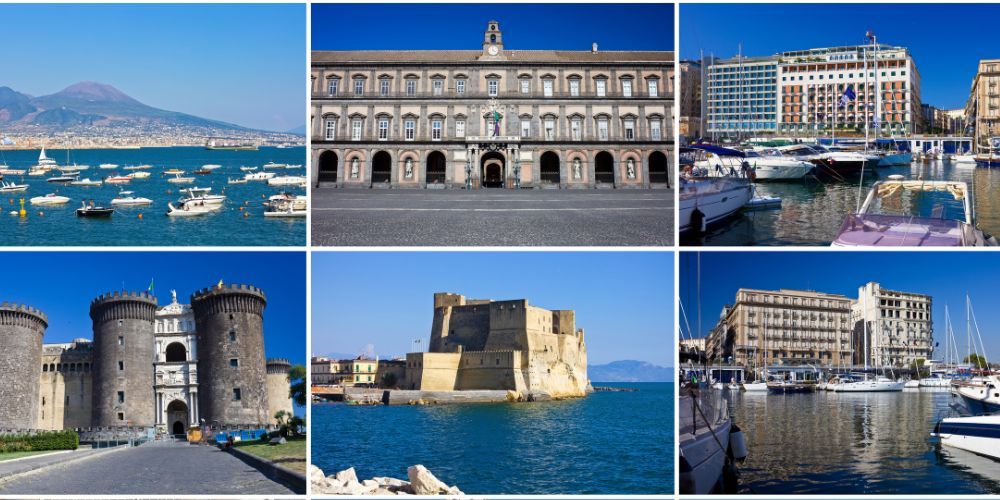
Naples is a city to experience in every detail: the beauty of Piazza Plebiscito, every slice of pizza in a wallet on the street, the famous 'cuoppo', the underground Naples. It is one of those cities that has so many faces that a lifetime is not enough to get to know it and it takes a moment to fall in love with it. want to know what are the main things to see in Naples? It is impossible to see everything in just a few days, but by adopting a few tricks and optimising your time, you will at least know what to visit in Naples and discover what is unmissable!
Here are our tips and suggested itineraries for visiting and knowing what to see in Naples.
What to visit in Naples: 1-day and 36-hour itineraries
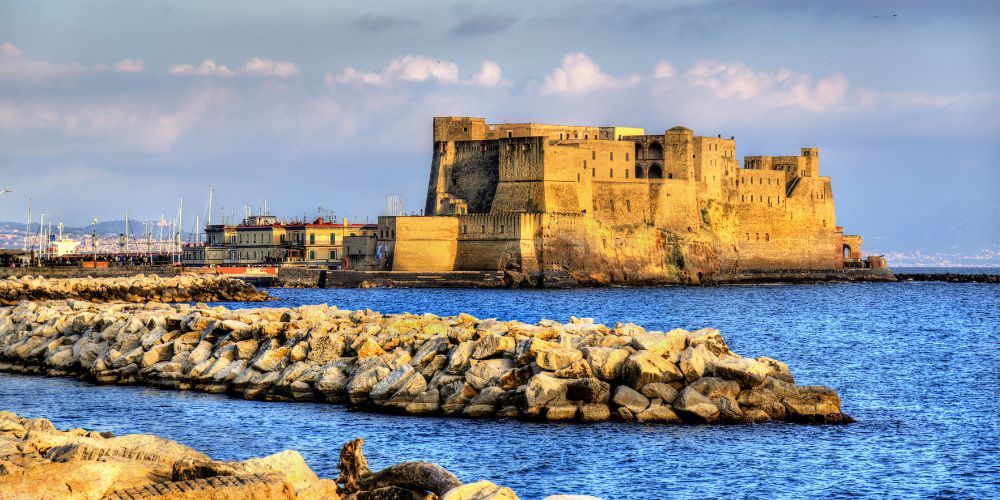
If you are only in Naples for one day, we advise you to arrive already with very clear ideas. You won't have much time to move from the historic centre and see all the neighbourhoods! Our one-day itinerary is designed to give you a true taste of the city's essentials. In this itinerary you will experience the city in 24 hours, or even less. You will discover the pass to visit Naples with no worries, but also the stations of the Art Metro. You will learn more about the San Severo Chapel and its mystery. We will introduce you to Piazza del Plebiscito and the Royal Palace, but also the Maschio Angioino and the heart of the city: Spaccanapoli and San Gregorio Armeno. We will not miss a tour of the Quartieri Spagnoli, Napoli Sotterranea, the Duomo and the treasure of San Gennaro, the Complesso Monumentale di Santa Chiara, Castel dell'Ovo, and the Museo Archeologico Nazionale, concluding the itinerary with a nice pizza for dinner.
If, on the other hand, you want to make day trips out of Naples, all you have to do is choose your destination, we have listed 10. Choose carefully which attractions to visit. In this itinerary we will show you places you can reach in a day from Naples such as: the Royal Palace of Carditello, the majestic Doric temples of Paestum, the Royal Palace of Caserta and its enchanting gardens, Procida, Positano, Ischia, Herculaneum, Pompeii, Sorrento, Amalfi and Capri.
Do you have a little extra time and want to know what to see in Naples in a day and a half? You just have to discover our complete itinerary in 36 hours. Here you'll find an all-round experience where you'll mix in the highlights of what to see in Naples, the music and the food. There will be no shortage of places to go for happy hour with live music, street food dining with local delicacies, as well as places to visit with a chance to taste the famous pizza on the doorstep. We will take you to breakfast in the Capodimonte forest and show you the shopping streets. In short, a 360-degree adventure to be experienced in 36 hours.
What to visit in Naples: 3-day itineraries
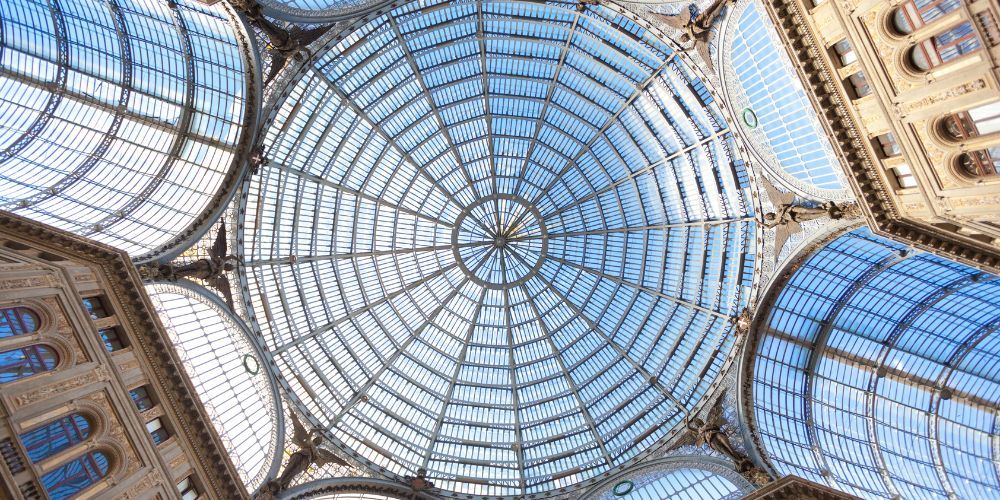
Discover our complete guide on what to visit in Naples on Friday, Saturday and Sunday. We will show you step by step how to discover the beauties of the city in a weekend. In this itinerary on what to see in Naples, we have put together all the things to do to experience the city. There will be no lack of visits to the most famous attractions and information on Monuments to visit in Naples, but also tips on good food.
On the subject of Monuments to visit in Naples and all that the Neapolitan city has to offer: here is what to see in Naples in 3 days. In this article all the most important attractions the city has to offer are mentioned and you will be shown the best way to access them all without too much difficulty.
What not to miss in Naples: 7-day itinerary

Discover what to see in Naples in a week: our comprehensive guide will take you through the city's art, folklore, good food and vibrant atmosphere. Read our day-by-day guide. If you have more time to experience the city, read our 7-day itinerary and we'll show you what to see in Naples, starting in the historic centre and passing by its most iconic sites such as: Naples Underground, Piazza Plebiscito, the Royal Palace and Castel dell'Ovo, its museums, an excursion to Mount Vesuvius, a day in Mergellina, Posillipo and Chiaia, the Quartieri Spagnoli, and concluding with a trip to Capri, Ischia and Procida.
Visit Naples: discover other itineraries
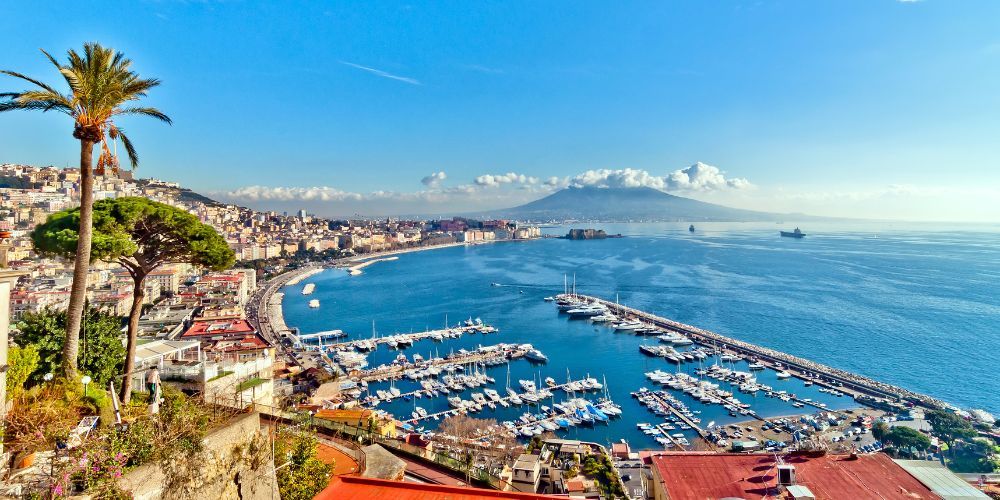
IIf you are a lover of hiking and want to know more about the place you are in, discover our itinerary that moves between the culture and nature of the Gulf of Naples. A complete journey awaits you to let you know everything there is to know. Posillipo and the Gaiola marine protected area, the islands of Ischia, Procida and Capri, the Campi flegrei and the Dohrn Foundation.
If, on the other hand, you are visiting the city during the Christmas holidays, follow our travel tips. In this guide we will point out 7 things to see and do in Naples at Christmas. You won't miss a stroll through the maze of streets of San Gregorio Armeno to see the famous artisans of the Nativity statuettes, nor the Christmas concert at the San Carlo theatre, but also a visit to Herculaneum and Pompeii, which are even more magical at this time of year. We will also tell you where to sleep, what to eat, what to see in Naples and the unmissable experiences to have during the Christmas holidays.
While you are here, don't overlook the opportunity of an itinerary among Neapolitan masterpieces, discover Caravaggio. An itinerary to discover the magnificent master of the study of truth, of the violent use of light as a metaphor for divine grace. We will start at the Pio Monte della Misericordia, passing through the Capodimonte Museum and Real Bosco to arrive at the Gallerie d'Italia in Palazzo Piacentini.
To conclude with the itineraries, we can only leave you with what not to miss in Naples, an experience to be savoured: discover our Food Tour. This is a gastronomic itinerary that will take you between flavours to tantilise your taste buds. We can't help but start with pizza, move on to the fritters of Spaccanapoli, discover a cuoppo, a sfogliatella or a baba in Piazza del Plebiscito and arrive in Mergellina where the Neapolitan taralli were born.
Getting around in the City: our tips for visiting Naples
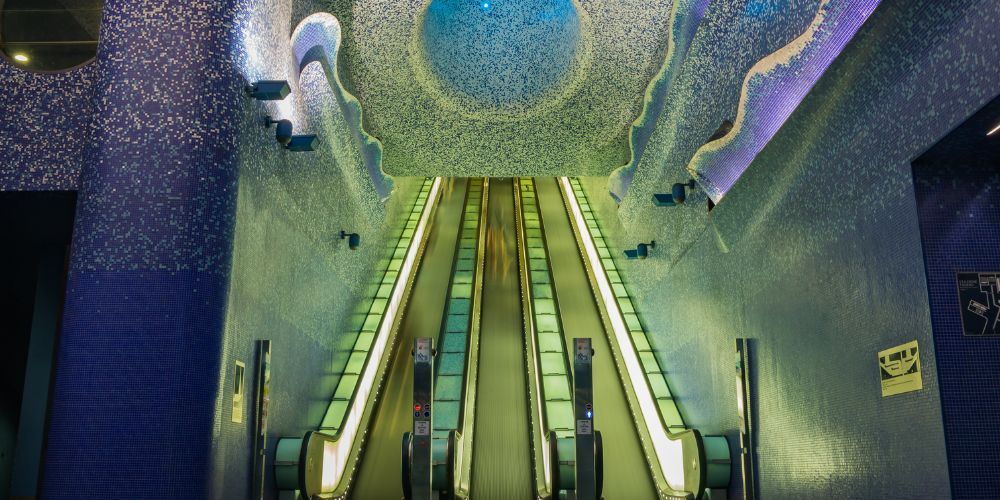
Naples is a city whose inhabitants mainly travel by car and is therefore often chaotic and busy. However, the brand new underground network and the well-enclosed historic centre, which includes almost all the main attractions, make it possible to visit the city without unnecessary hassle and to get around easily even at peak times. We will provide you with tips and a guide on how to get around Naples. We recommend a guided walk through the famous streets of Naples to enjoy the magnificent panorama and experience the colours, smells and details of this wonderful city.
So find out how to get around Naples by public transport. We have taken care of providing you with all the necessary information. A complete guide for getting around the city safely by bus, tram, metro and funicular, as well as the Circumvesuviana, Circumflegrea and Cumana. You will also find all the information you need on fares and tickets available to move around the city comfortably.
If, on the other hand, you want to know how to get to Napoli Sotterranea: here is our complete and up-to-date guide. We will tell you how to get to the Naples Underground from Capodichino Airport, the Central Station or Piazza Garibaldi if you arrive by train, or how to get around by metro or bus, but also if you arrive in the city by car we will show you where to park. Even if you arrive by sea we will show you how to get around from the port.
Here is our Top 10 things to see in Naples list
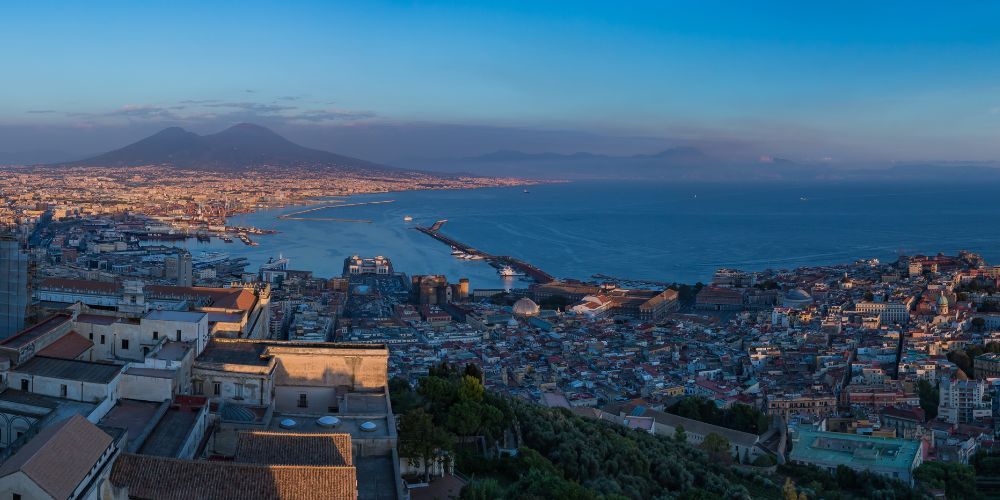
Naples is undoubtedly one of the most beautiful cities in Italy, rich in culture, tradition, art and breathtaking views. A visit to this city is an unforgettable experience for those discovering it for the first time. Here is a guide to help you choose what to see in Naples.
'See Naples and then die'. This is definitely a proverb that helps you understand how exciting this city can be. There is so much to see in Naples, from breathtaking views to culture. We thought we'd put together a short list of 10 things to see in Naples that can suggest some must-see places during your holiday on what to see in Naples and what to visit.
Here is our Top 10 things to see in Naples list:
10. Guided Tour of Pompeii
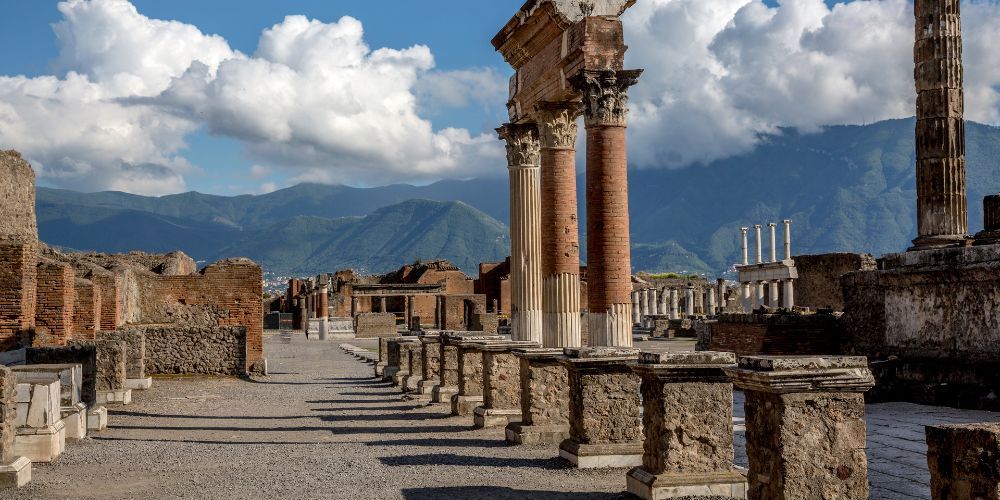
Pompeii is known worldwide for its tragedy when the eruption of Vesuvius in AD 79 buried the rich Roman city along with Stabiae, Oplontis and Herculaneum. But the catastrophe allowed us to discover, almost 2000 years later, a living historical testimony, an intact slice of community life in the greatest empire of antiquity. The excavations allow travellers to experience a leap back in time. Here you can fully immerse yourself in a vanished world that appears with grandeur and misery, without glitter and tricks. The excavations allow us to visit temple halls, public buildings and the dwellings of wealthy aristocrats, but also to stroll among ancient shops, inns, council houses and the lupanari, the area where the commoners lived. Particularly moving is the sight of some plaster casts, depicting the torment that the ancient Pompeians suffered from the fiery gases of Vesuvius.
Reserve your Pompeii Guided Tour now!9. What to see in Naples: visit the Underground City

In Piazza San Gaetano on Via dei Tribunali is the gateway to Napoli Sotterranea. You will be led into the bowels of the city, on one of the most famous routes, part of what to see in Naples. Discover Greek and Roman influences and, most importantly, relive the tragic days of World War II, when some 40,000 Neapolitans took refuge underground to escape Allied bombing and German reprisals. A guided tour into the bowels of the city to experience. Tours are conducted in Italian and English. Other languages, group tours and tours outside office hours must be arranged in advance.
Reserve your tickets for Naples Underground!8. Visit Vesuvius: One-day tour
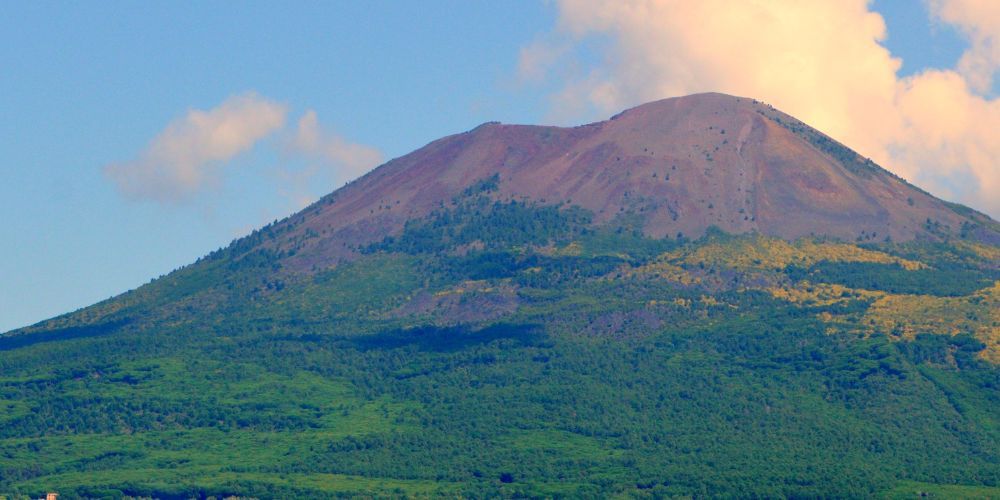
Herculaneum is world famous for its archaeological excavations of the Roman city, which according to legend was founded by Hercules and was destroyed by the eruption of Vesuvius in 79 AD. Corso Regina, which stretches from the archaeological area to Torre del Greco, is called the Miglio d'Oro (Golden Mile) because of the 18th-century villas that line it. The road to the Great Cone of Vesuvius begins at Herculaneum, and one of the what to see in Naples must be to visit the crater.
Reserve your Vesuvius Guided Tour now!7. Guided tour of the Catacombs of San Gennaro: What to see in Naples

Arranged on two non-overlapping levels are the Catacombs of San Gennaro. Both are characterised by very large spaces, unlike the more famous Roman catacombs. This was possible due to the workability and strength of the tuff. It was probably an aristocratic tomb, with rooms donated to the Christian community. Expansion began in the 4th century AD after the body of St Grippino, the first patron saint of Naples, was buried in the crypt dedicated to him. It features a single nave carved into the tuff, a bishop's throne carved into the rock and an altar with an opening through which devotees can see and touch the tomb of the patron saint.
Reserve your Guided Visit to the Catacombs of San Gennaro now!6. What to see in Naples: the Herculaneum excavations

The archaeological excavations at Herculaneum have revived the remains of an ancient city buried under a blanket of volcanic ash, lapilli and mud during the eruption of Vesuvius in 79 AD. The first accidental discovery came after excavations for the construction of a well in 1709. The archaeological exploration of Herculaneum began and was interrupted for many years, until in 1927, Amedeo Maiuri promoted systematic excavations. Most of the finds are in the National Archaeological Museum in Naples. In 2008, a virtual archaeological museum was developed, showing the city before the eruption of Vesuvius. The site attracts an average of 300,000 tourists each year and was inscribed on the UNESCO World Heritage List in 1997 together with the ruins of Pompeii and Oplontis.
Reserve now your Guided Visit to the excavations of Herculaneum!5. Admission to the National Archaeological Museum: definitely go to what to see in Naples
What to see in Naples once in a lifetime is the National Archaeological Museum in Naples. Due to its rich and valuable heritage of works of art and artefacts, it is considered one of the most important archaeological museums in the world and the most important for Roman painting. The museum consists of private collections acquired or donated to the city over the centuries, including collections by Borgia, Sant'Angelo, Stevens and Spinelli. There are three main nuclei: the Farnese Collection, the Pompeian Collections and the Egyptian Collection.
Reserve your National Archaeological Museum guided tour now!4. Guided tour of the Bourbon Gallery
The Bourbon Galleries are underground caverns and are named after Ferdinand II, King of Bourbon, who began their construction in 1853. He created a secret underground link between the Royal Palace and Piazza Vittoria due to the revolutionary uprisings of 1848. The location was chosen because it was close to the sea and the barracks so that in case of danger they could escape safely. The tunnel was eventually closed for economic reasons and the decline of the Bourbons with the arrival of the unification of Italy. Thanks to this secret underground passageway, many Neapolitans found refuge during the bombings of World War II. In the post-war period, the gallery served as the city's judicial depository and was used to store everything extracted from the rubble of the bombings and everything recovered from the collapses was also stored there. Today, the Galleria Borbonica is one of the most fascinating and evocative attractions of what to see in Naples, with four routes visitors can choose from.
Reserve your tickets for the Bourbon Gallery tour!3. What to see in Naples: the Royal Palace
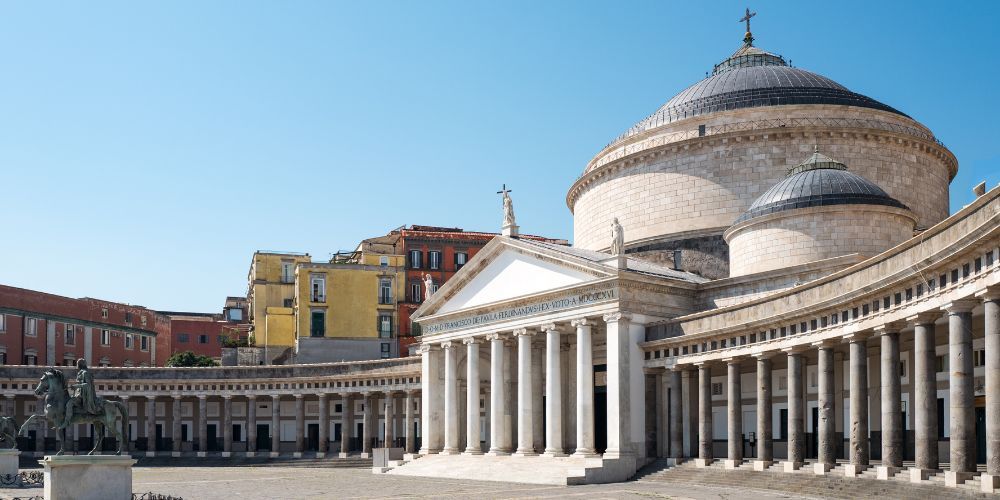
The Royal Palace of Naples is a historical building with its main entrance located in Piazza Plebiscito. Built starting in the 17th century, it reached its final appearance in 1858. Many architects were involved in its construction and restoration, including Domenico Fontana, Gaetano Genovese, Luigi Vanvitelli, Ferdinando Sanfelice and Francesco Antonio Picchiatti. It was the residence of the viceroys of Spain and Austria, the Bourbon dynasty and the Savoy dynasty after the Unification of Italy in 1861. Ceded by Victor Emmanuel III in 1919 to the state property, it is mainly used as a museum complex, especially the royal flats, and is home to the National Library.
Reserve your tickets to the Royal Palace!2. What to see in Naples: The City of Science
Città della Scienza is an area dedicated to the promotion and dissemination of science, located in the Bagnoli district. It is the first interactive science museum in Italy aimed at the dissemination and promotion of scientific culture and cultural tourism. Promotional activities take place through meetings with professionals in the field, exhibitions, workshops, interactive projects, direct experimentation of natural and technological phenomena involving people of all ages.
Reserve your tickets for the City of Science!1. Guided tour of the Catacombs of San Gaudioso
Have you ever visited the catacombs of San Gaudioso? Septimius Sergius Gaudiosus, was bishop of Abitine in Tunisia, and arrived in the Neapolitan town by chance. His arrival happened because, after the Vandal invasion, he did not want to convert to Arianism, so King Genseric ordered him to leave, on a ship without sails and oars, together with the other Christian exiles. Upon his death, he was buried in the extra moenia cemetery area and immediately became an object of worship. From there, the early Christian catacombs began to expand, later to become the Catacombs of San Gaudioso.
Reserve your Guided Visit to the Catacombs of San Gaudioso now!5 Things Not to Do in Naples
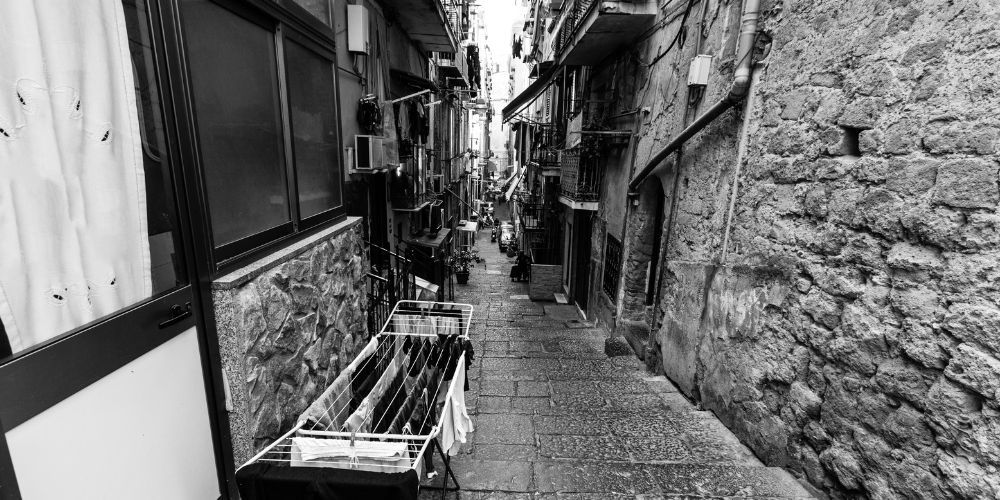
As we have already mentioned, this is a city rich in history, culture and tradition. Its beauty is famous all over the world and many people visit Naples every year.
You should know that you will find all kinds of information on how to spend your holidays and what to see in Naples. But nothing about things not to do in Naples? Things that no tourist guide will tell you about and that you won't find written on any map. Let's discover them together!
Follow our tips for visiting Naples:
- Plan everything, leave yourself some time to experience the city's most authentic atmosphere.
- Visit only the streets and itineraries suggested. Naples is full of hidden treasures, every now and then it is good to get lost.
- Do not inquire in advance about the opening and closing times of attractions. To avoid unpleasant jokes, it is always better to find out as much as possible and book in advance.
- Don't talk to the locals. Naples' greatest wealth is its people. Whether at a bar, restaurant or just for directions, it is always good to ask the locals. Even if not all of them speak perfect English, they will try to help in any way they can and this is one of the most enriching experiences of the trip.
- Don't visit Naples: if you plan a trip to Italy, you can't avoid it!
10 things to see in Naples like a local
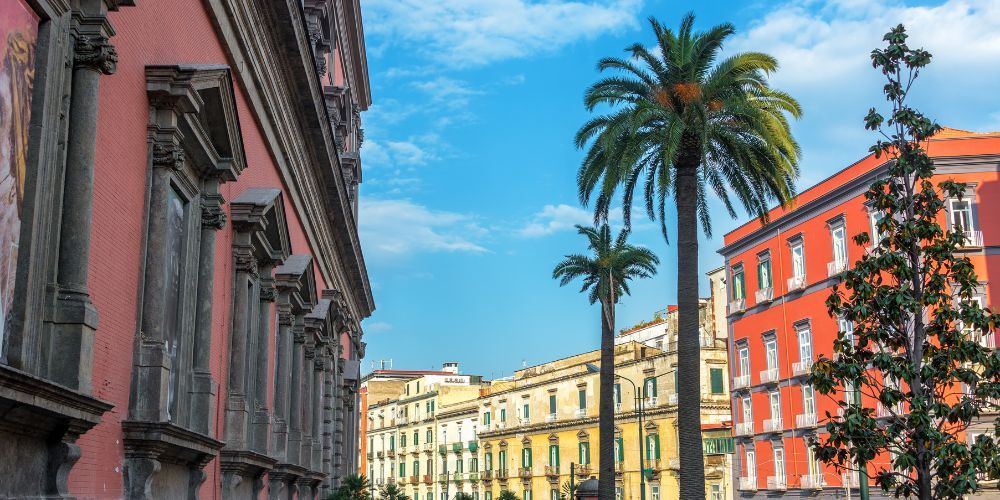
What smells in the air in Naples? The smell of the sea, history, sweets and pizza. There are so many places to visit in Naples where you can admire its majestic churches, ancient palaces and monuments. When you visit Naples and walk the colourful streets of the capital of southern Italy, you will understand where the warmth of the locals comes from. Naples is known around the world as a big, exciting and dreamy city and only keeps its nature secret from the people who have lived it. An essence that is mixed with the noise, the locals, the sun and the beat of Vesuvius, the feeling of its boundless beauty and the fear of silent and dangerous activity.
Seeing Naples and its surroundings is worth exploring, interacting with the warmth of the Neapolitans and letting yourself be carried away by the city. Only then will you really know the best places to visit in Naples. Discover Naples like a local, a guide who will accompany you through all the wonders of the city. You will discover with your own eyes the ancient and modern artistic heritage and use all your other senses to listen to the sounds, music, smells and tastes of the Neapolitan city. It doesn't matter if you only have one day or more. You can choose 10 things to see in Naples and create a suitable itinerary among the monuments to visit in Naples.
What to see in Naples: main things, what to visit, places, monuments, what not to miss
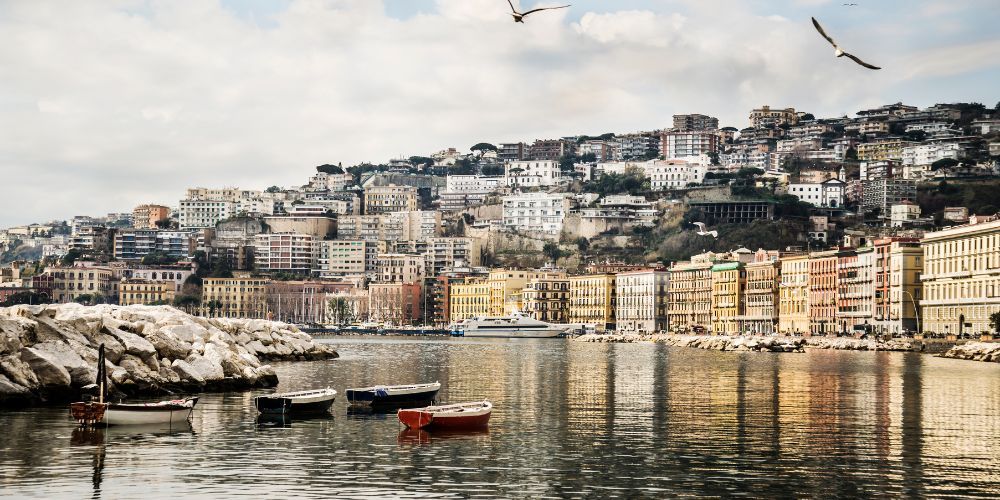
Naples is a city full of charm, where history, culture and culinary traditions are intertwined with wonderful panoramic views of the bay of the same name. Founded in the Bronze Age, Naples has a historic centre that has been declared a UNESCO World Heritage Site. In and around the city are unique archaeological sites such as Pompeii and Herculaneum.
Naples is the perfect destination for a trip dedicated to the joys of life. With a mild climate all year round, one of the most beautiful bays in the world and delicious culinary specialities such as pizza, Naples is definitely a destination not to be missed. That's why we'll give you more reasons to visit the city where we'll list 16 reasons why it's famous, such as: the Neapolitan cuisine, the 500 domes, Vesuvius, the Nativity scene, the Neapolitan song, the theatre, the myth of Maradona, the blood of San Gennaro, the local markets, the street art, the Neapolitan language and its coffee.
On what not to miss in Naples are its five must-see squares: Piazza Municipio, Piazza Dante, Piazza Bellini and Piazza Cavour. Read the article to find out more.
If you are a true daredevil and want to know the experience you can't miss, you have to take boat trips around this beautiful gulf. Discover the excursions you can take and let yourself be enchanted by the beauty this place offers in its bay. In the article you will find out everything you need to know and more.
If you are in the city with your family or you are a lover of public parks and green areas, you just have to discover the places to visit in Naples. Our guide will help you choose the destination that best suits your needs. Among the places to visit in Naples, we have also included this guide for lovers of places surrounded by greenery. Discover the Royal Park of Capodimonte, the Virgiliano Park, Villa Floridiana and Villa Comunale.
And if the weather should be adverse, don't worry because we have thought of everything so that visiting Naples can be a pleasant experience for you that leaves you with many emotions and positive memories. That's why if your question is what to do in Naples when it rains, click our in-depth link and discover all the monuments, places and places to visit in Naples when the weather is at its worst. You will find 10 activities to do indoors and all the useful tips.
We conclude this comprehensive guide on what to see in Naples, where we have included different itineraries and information on the Neapolitan city precisely to give you the chance to experience it to your heart's content. To complete the work, knowing that our readers are mainly foreigners, we can't help but give you a cultural experience to enjoy in the heart of the city and direct you with all the information you need to learn Italian in Naples. Discover the school for foreigners in the heart of the city and learn Italian between excursions and cultural events.
And don't forget that to visit Naples you have to talk to and ask information from the people who live there, you will discover the quality that makes the city truly unique. Whatever activity you do in this microcosm of history and folklore, this extraordinary place can make it an unforgettable experience thanks to participation, professionalism and passion.
About the author
Written on 18/01/2024

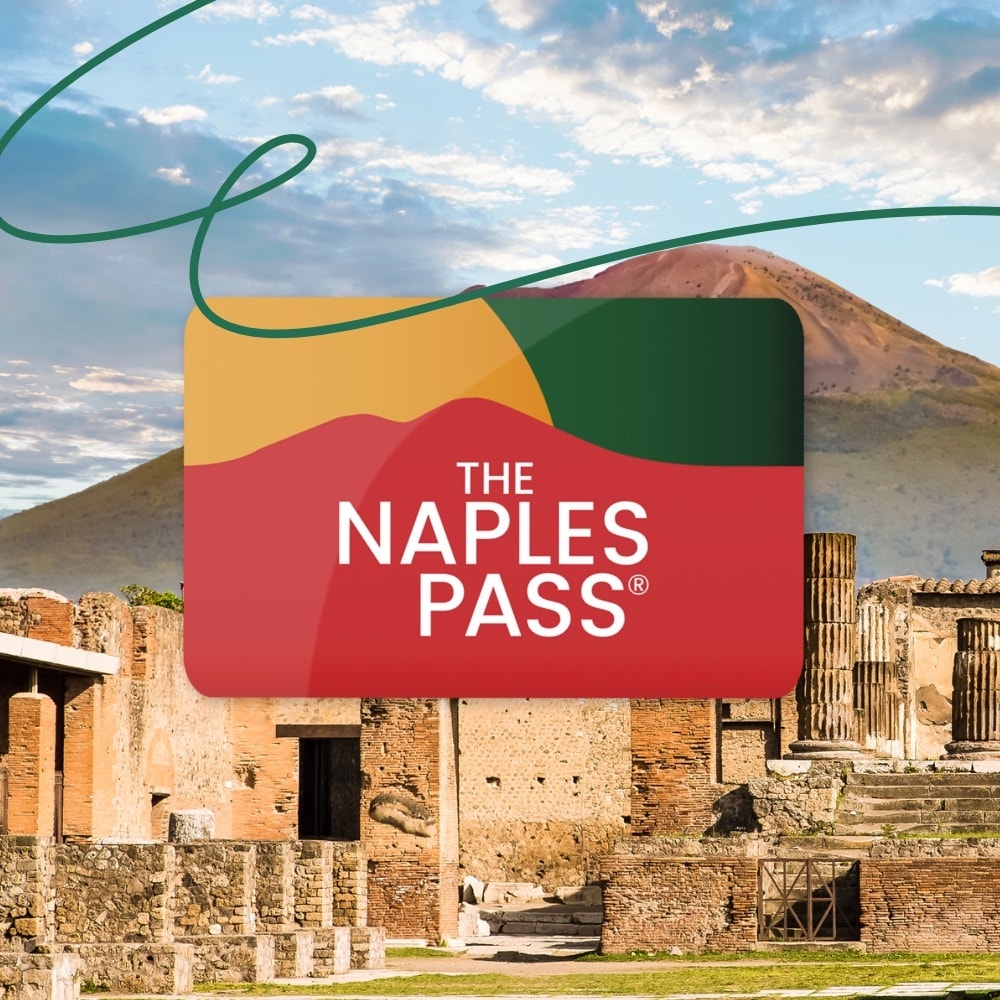
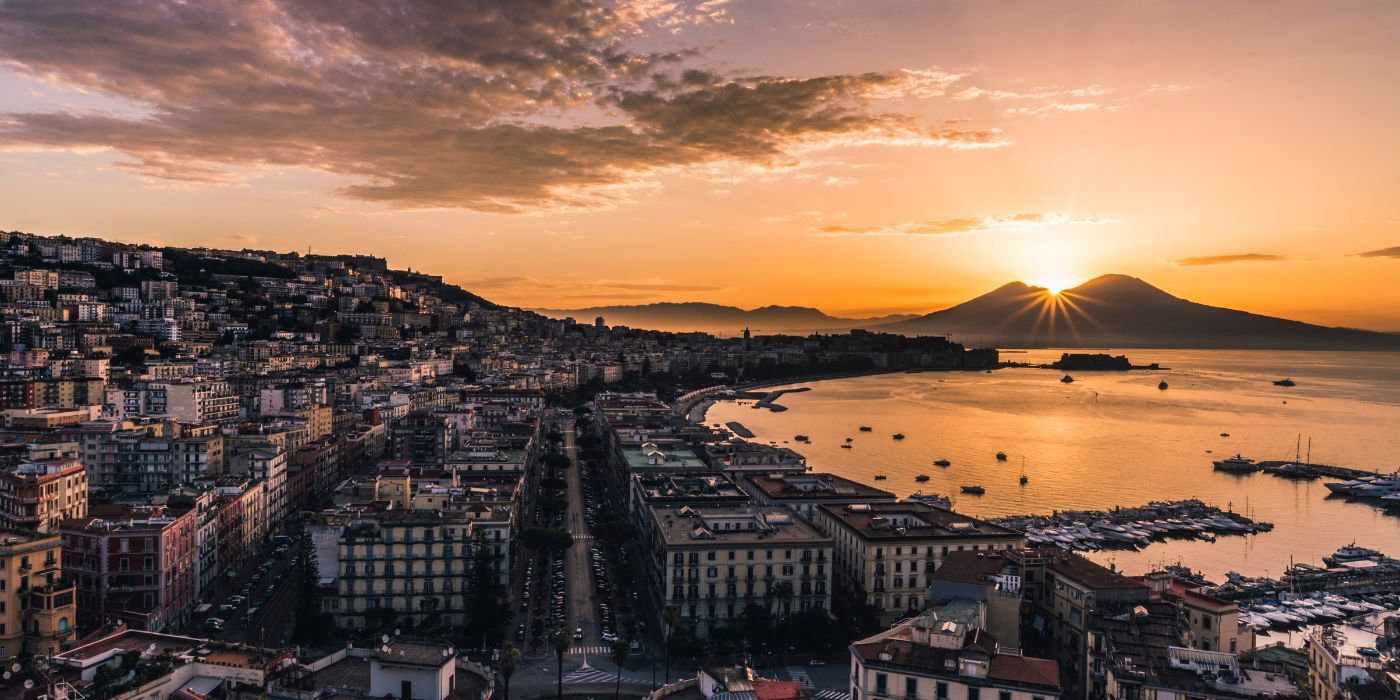

Simone Spolitu
What to see in Naples? Here is everything you need to know to organise your trip to visit Naples in 2024.